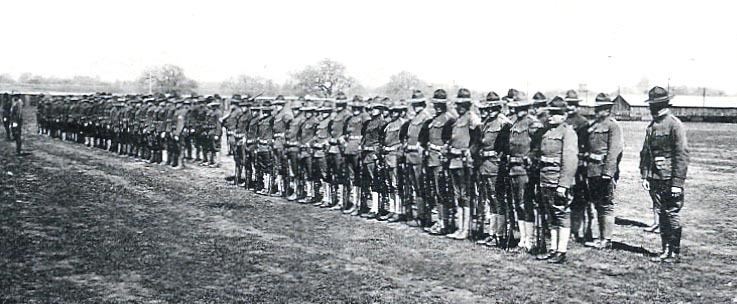 | ||
Camp fremont documentary
Camp Fremont was a World War I-era military base located near Palo Alto, California. Construction started in July, 1917 and the post closed in September, 1919.
Contents
- Camp fremont documentary
- Adventures in writing camp fremont 2016 end of camp video
- Location
- Layout
- Creation of post
- Use during World War I
- Association with prominent individuals
- Post closing
- Legacy
- Present day
- References
Adventures in writing camp fremont 2016 end of camp video
Location
Camp Fremont was constructed on vacant land in and around the area of Palo Alto and Menlo Park.
Layout
Camp Fremont consisted of slightly more than 7,200 acres (29 km2) and contained approximately 1,125 structures, mostly temporary buildings constructed of wood.
Creation of post
During preparation for possible entry into World War I, the U.S. Army determined a need existed for a post on the west coast of the United States to train National Guard units for combat.
Construction started on July 24, 1917, and the new installation was named in honor of Major General John C. Fremont, an early hero of California.
Use during World War I
Camp Fremont served as a training site for the National Guard's 41st Infantry Division, which included soldiers from Washington, Oregon, Idaho, and Wyoming. The 41st Division was later moved to Camp Greene, where it completed its training before departing for fighting in France.
The 8th Infantry Division then occupied Camp Fremont. Slated for combat in France, the 8th Division was later assigned the mission of fighting in Russia during the Siberian Intervention.
Camp Fremont was also home to the 332nd Auxiliary Remount Depot, part of the U.S. Army Veterinary Corps. The depot was authorized 5,000 animals, and averaged about 2,300. Remount depots were organized to procure, train and condition horses and mules, and then dispatch them to the units that required them.
Association with prominent individuals
Post closing
After the end of World War I combat, there was no longer a use for Camp Fremont, and the Army ordered the post closed. The buildings were sold at auction, and the camp was abandoned in January, 1920.
Legacy
Several new businesses were begun in Menlo Park and Palo Alto to provide goods and services to soldiers at Camp Fremont, many of which stayed in existence after the post closed. Menlo Park received its first paved streets and its first municipal water and gas services during World War I, both of which were constructed by the 8th Division engineers.
Present day
The post hospital on Willow Road in Menlo Park later became the site of a Veterans Administration hospital. It is now also the location of Stanford University's Arbor Free Clinic.
Two popular restaurants, MacArthur Park (which once housed Palo Alto's community center) and the Oasis Beer Garden are both located in former Camp Fremont buildings.
